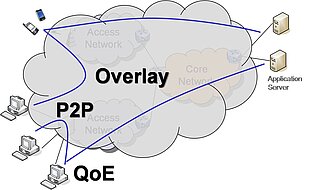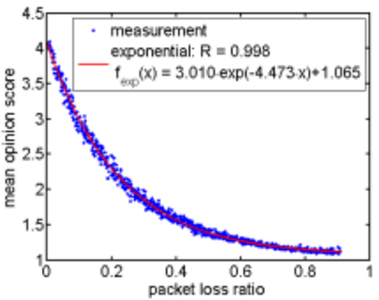Quality of Experience

Future Internet Applications & Overlays
| Head | ||
| Researchers | ||
| Student Helpers | Oskar Smietanka |
Quality of Experience
User satisfaction with application and service performance in communication networks has attracted increased attention during the recent years. The notion of QoE was introduced in several white papers , mostly in the context of multimedia delivery like IPTV. Besides of objective end-to-end QoS parameters, QoE focuses on subjective valuations of service delivery by the end users. It addresses (a) service reliability comprising service availability, accessibility, access time and continuity, and (b) service comfort comprising session quality, ease of use and level of support. QoE is a subjective measure from the user perspective of the overall value of the provided service or application. The necessity of introducing QoE can be explained on the example of VoIP. A voice user is not interested in knowing performance measures like packet loss or received throughput, but mainly in the experienced speech quality and timeliness of the connection.
Simple Mapping Functions: QoS to QoE
We derive simple mapping function between QoS and QoE are appropriate and investigate which parameters are appropriate for these mapping function. In particular, we consider easily measurable QoS parameters, like packet loss or IPDV, and show their impact on the QoE, e.g. in terms of mean opinion scores MOS. Therefore, test beds are used to control the network environment and the influence on the user-perceived quality on application level is captured.In this context, the IQX hypothesis is formulated which assumes an exponential functional relationship between QoE and QoS. Promising examples which fulfill this exponential relationship are the voice codecs iLBC and G.711. Currently, the H.264 video codec is investigated.
QoE Control
The interest in how the user perceives usability, reliability, quality and price-worthiness as a means of competition is increasing. The provider or an application itself needs to be able to observe and react upon quality problems, at best before the customer perceives them. In order to provide the customer the best QoE, it has to estimated, e.g. utilizing simple mapping function, and accordingly the provider or the application reacts with appropriate mechanisms. This is investigated on the example of P2P-based video-on-demand streaming with scalable / multi-description video codecs.



